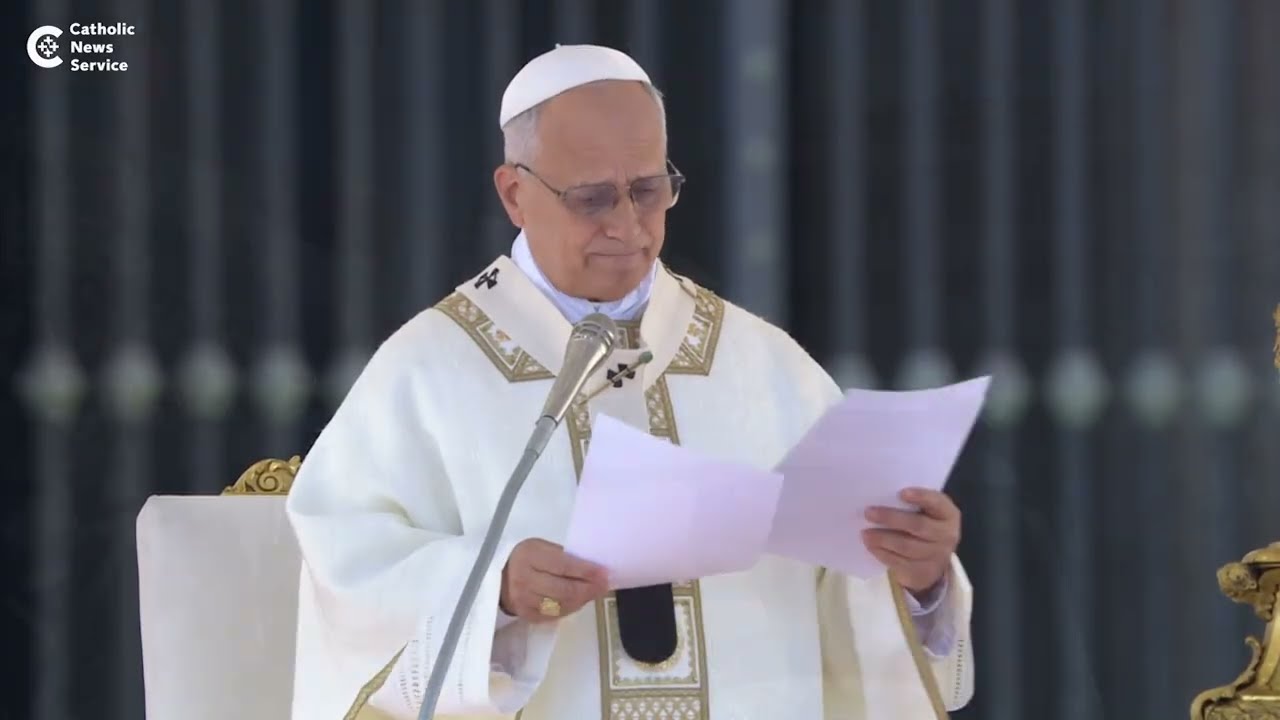
Across Europe, Catholic families are turning Halloween into a celebration of light, life and holiness. Known as “Holywins” – a play on “Holy” and “Halloween” – the movement began in Paris in 2002 and has since spread to Poland, Belgium, Italy, Spain and beyond.
Instead of dressing as ghosts or monsters, children appear as saints and angels, joining joyful parades, games and prayer services that highlight the joy of All Saints’ Day on 1 November. For over two decades, it has spread beyond Europe, inspiring families to rediscover the beauty of sainthood and becoming an opportunity to manifest faith in public.
At the Strumienie preschool in Józefów, outside of Poland’s capital, Warsaw, teachers and parents organise an All Saints’ ball that turns catechesis into play.
“The All Saints’ ball in our preschool began from a need to celebrate and share joy,” said Katarzyna Astrachancew, deputy director for education and development.
“Thanks to this event, children learn about their patron saints. It is not only a kind of catechesis, but also a space to build community and create unforgettable memories,” she told OSV News.
During the event, children come dressed as their favorite saints. Astrachancew said the activity unites entire families.
“We encourage families not to rent costumes but to make them themselves. Often older siblings prepare a costume for the younger ones, learning that a family is a team.”
While she admits the celebration naturally draws comparisons to Halloween, Astrachancew prefers a broader view. “In a sense, yes, it is an alternative,” she told OSV News. She said she wouldn’t say Holywins is something organised to contrast Halloween, but rather “it’s a way of fulfilling the need for joy within the culture in which we live.”

For her, the event is less a rejection of Halloween and more a positive expression of Catholic identity. “It shows the beauty of our culture and the universal call to holiness,” she added.
Elsewhere in Poland, towns and parishes have taken the celebration outdoors, calling public marches of children dressed as saints as “All Saints’ balls” that became a public manifestation of faith. In Libiaz, a town in southern Poland, more than a thousand children and families join a joyful Holywins parade each year.
Participants march through the streets dressed as saints, waving banners and singing hymns, before gathering for Mass and a community celebration with drinks and sweets. Organisers describe it as a “procession of life and light” meant to show that faith can be festive and public.
Similar scenes unfold further west, in Belgium, where Holywins has become an annual family festival. Jacques Galloy, a lay Catholic from Liège and longtime organiser, said the movement began in 2008 among families from the Emmanuel Community who wanted to “restore the true meaning of All Saints’ Day.”
“Children, parents and grandparents come together for a day of joy,” Galloy told OSV News.
The event in Hannut, a town in central Belgium, draws around 180 participants each year.
“In a society that often avoids speaking about death, Halloween at least opens a conversation,” he said. “But it does so through dark and morbid symbols. Holywins responds by presenting All Saints’ Day as a celebration of hope.”
Throughout the day, Belgian children visit game stations run by teens, learning about saints through skits, crafts and music. There’s adoration adapted for children – and, naturally, the “Holy Buffet,” featuring Belgian waffles, crepes and hot chocolate. The day ends with a concert of Christian music.

“It’s a real family feast,” Galloy said. “A celebration of life, not of fear.”
The idea is spreading quickly. Galloy noted that Holywins celebrations now appear in France, Spain, Italy and even Latin America. “It’s encouraging to see so many families rediscover the joy of sainthood,” he said.
In Italy, on 31 October, many parishes organise local initiatives as prayerful alternatives to Halloween. Across the country, parishes invite children to dress as saints or angels and join “processions of saints” through local streets. Some communities host evenings of adoration and music.
The parish of St Anthony the Great in Turin, for instance, launched the “Un santo per amico” initiative, or “A saint for a friend,” that invites families and children to choose a saint, learn about their life, and follow their example daily.
Spain, too, has embraced the idea of Holywins.
The Diocese of Getafe, outside of Madrid, launched its own edition of “Holywins”, or “la santidad gana” in Spanish, for 31 October, inviting “children, youth, families and adults to a day of joy, light and Christian witness” in multiple parishes of the diocese.
In the Diocese of Cordoba, the Gaudium school distributed catechetical materials for Holywins 2025, encouraging parishes and schools to prepare workshops, games and saint-related activities ahead of All Saints’ Day.
Themed “To be always united to Jesus, this is the plan for my life,” the school chose St Carlo Acutis – the author of those words and canonised 7 September – as the patron saint for 2025.
Across Europe, Holywins efforts share a common thread. They are not merely reactions against Halloween, but affirmations of hope, reminding both children and adults that Christian joy can shine in a culture. The tone is festive but rooted in belief.
As Belgian organiser Galloy put it, “We believe that death is not the end but a passage toward the light. Let’s honor our dead – but also celebrate life beyond death.”
The post It’s Holywins: European Catholics offer a joyful alternative to Halloween appeared first on The Catholic Weekly.































































